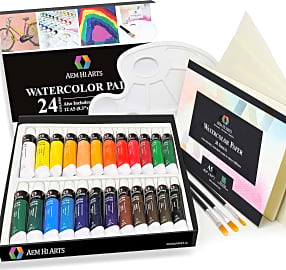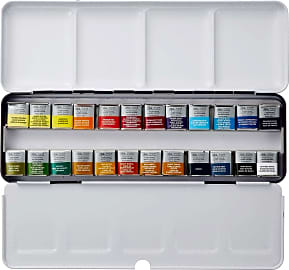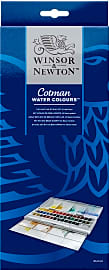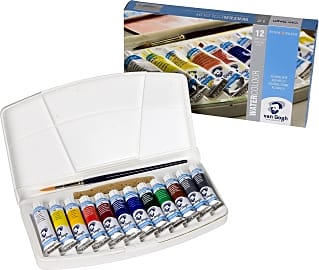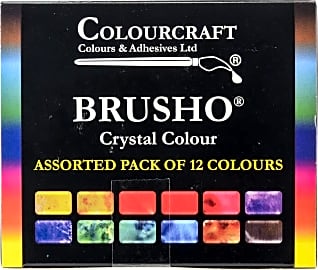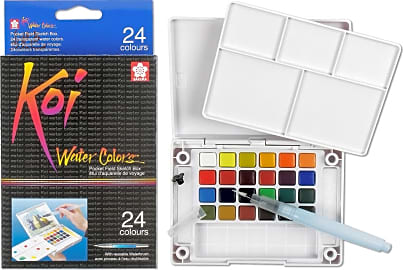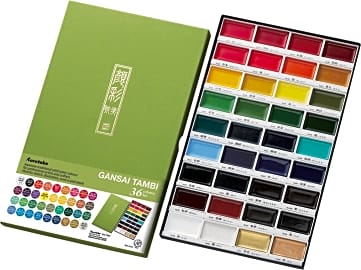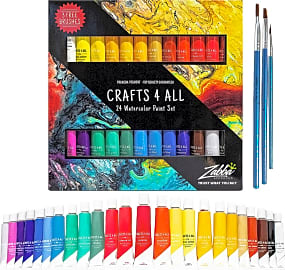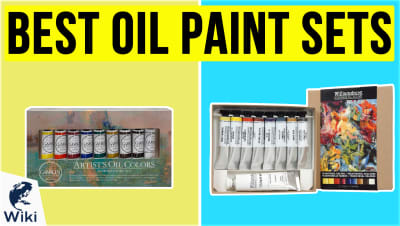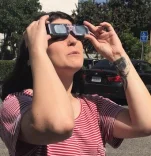The 10 Best Watercolor Paint Sets

This wiki has been updated 28 times since it was first published in November of 2018. Watercolor paint sets come in a wide variety of options, so whether you’re a student or a seasoned artist, you’ll want to do some research before making your next purchase. The cost fluctuates widely, depending on factors like pigment concentration and permanence. Here we list your best choices at various price points, to help you find a nice fit for your needs and experience level. When users buy our independently chosen editorial selections, we may earn commissions to help fund the Wiki.
Editor's Notes
July 21, 2020:
Our latest update saw the removal of the Reeves 24-Pack, which became unavailable, as well as the Royal & Langnickel 24-Pack and Colore Kit. We felt this list needed a few higher-end options to balance out the beginner-friendly selections, and the Colore Kit suffered from a handful of complaints regarding its consistency. As this category is brimming with excellent choices at myriad price points, we felt it didn't make the cut any longer.
In our effort to bring on a few more artist-grade items, we added the Schmincke Horadam and Sennelier L'Aquarelle. Schmincke is a German company that has been manufacturing watercolors, pastels, and pigments for professional artists for generations and is known for its high quality. The Horadam's paint cubes are extremely pigmented and require very little water to get going, which is a boon when painting outside. They're easy to dilute, aren't granular or chalky, and come with a case that has a thumb indent to make holding it easier.
Sennelier offers excellent granulation, rich colors, effortless blending, and uses honey as a binder and preservative to great effect. Pigments are produced using old, traditional methods, like soaking them in purified water with no mineral salts for 24 hours before mixing them in with the bonding agent. They're also ground using grindstones that rotate slowly so as not to heat up the paste. Both of these new additions come in sturdy tins that can fit easily into a backpack.
Finally, we felt our selections could use a set that's great for mixed media and experimentation, and so added the Brusho by Colourcraft. Manufactured in England, this set is nontoxic but will stain hands and clothes, so wear gloves and an apron while painting. The colors mix well and can be applied to multiple surfaces in myriad ways and used to create a variety of effects.
November 05, 2018:
Included selections at various price points, in pans as well as tubes, for a rounded list. Also took into consideration factors like packaging and portability, as many artists like to carry their paint sets around.
Special Honors
Blick Liquid Painting Class Kit Perfect for the classroom, these dye-based watercolors can be used directly from the bottle for intense single-stroke color or diluted with water to create a wash effect. They are made in the USA, nontoxic, and free of dairy, latex, soy, egg, gluten, peanuts, tree nuts, and casein. The set contains dozens of brushes, twelve pieces of watercolor paper, plastic mixing trays, and ten colors. dickblick.com
Watercolors From The Masters
At the end of the day, any serious artist shouldn’t confine themselves to a single medium, at least not for more than a set period of experimentation.
In many art circles, oil gets all the attention, especially when we’re talking specifically about art applied to a canvas at the exclusion of things like sculpture and other mixed media. There are some good reasons for this, as a majority of the most renowned works of art in recent human history are done in oils. Oil paints also offer the artists a tremendously flexible medium, one that’s slow to dry, immensely pliable, and extremely responsive when mixing different pigments together . It’d be easy to assume that the great masters, from Da Vinci to Van Gogh, did all of their most important work in oils, and maybe never even bothered to play with watercolors.
An assumption like that would overlook a tremendous amount of stunning work by some of the most recognizable names in art history, as well as a few watercolor specialists you’d be remiss to ignore. And while the undeniable flexibility of oil colors has been employed to great effect over the centuries, you may find through these examples that watercolors offer perhaps more natural vibrance when applied with skill. They also require little more than the paints and some water to get going, with no additional oils or mixing techniques required.
One of the foremost watercolor artists in history is no doubt Albrecht Dürer, whose most remarkable paintings depict the whole and various parts of a dead European roller, a bird whose fascinating coloration is rendered immaculately in watercolor.
An unexpected source of remarkable watercolor work also comes from one of England’s most celebrated poets of the 18th and 19th centuries, the writer William Blake. Blake’s work, like much of his poetry, had a darkness to it that was steeped in Greek and Roman mythology. Any artist concerned that watercolors can’t provide the depth and menace seen in the oils of a Francis Bacon would do well to review Blake’s paintings.
Beyond these watercolor specialists, you may be surprised to learn of the breadth of work undertaken in watercolor by the likes of Van Gogh, Georgia O’Keefe, and others whose most famous pieces are often from the oil catalog. At the end of the day, any serious artist shouldn’t confine themselves to a single medium, at least not for more than a set period of experimentation. To that end, a collection of watercolor paints can be a boon to your creative juices.
Choosing A Watercolor Paint Set
When choosing a set of watercolor paints, there are some particulars that will make a big difference from one set to the next. Some of these are standards to which any set should aspire, while others are specific to the artists and their styles or intended uses.
Storage isn’t just a question for the paints themselves, however.
Quite possibly one of the most important aspects of any watercolor set has nothing to do with the physical composition of the pigments themselves; rather, it has to do with the means by which those pigments are stored. Most watercolors come in a solidified, or semi-solidified form, either in trays or tubes, but occasionally in small tins containing a powdered form of their pigment. Generally speaking, tubes are often the best vessel for watercolors, as open trays and tins leave pigments vulnerable to contamination from other colors in the set, or from a brush that isn’t quite as clean as it should be before it’s dipped.
With tubes, your individual colors are always protected, but there is a downside here. With trays, you only ever use as much of the paint as you need, and as it dries it preserves itself for future use. Once your paint is out of the tube, however, there’s no putting it back, so you may have to find a storage solution for whatever trays or palettes you used for that particular piece until you’re ready to revisit them.
Storage isn’t just a question for the paints themselves, however. The storage of those tubes or trays can also make a difference. Some of these sets are decidedly more portable than others as a result of their case design, while others don’t come with any kind of case at all. And what else a given set comes with will be a matter for the individual artists, as some painters will already have everything they need to get going, while others may make use of a few extra brushes or a palette.
There’s another term that you might see in a few product listings called lightfastness. This is the way that the industry rates a given paint’s ability to stand up to exposure to light without degrading. If you’re at all familiar with the restoration and preservation of paintings that are more than a century old, you know that keeping any medium from degrading — from oils and acrylics to watercolors and berry juice — takes a tremendous amount of work, as things like handling and transport can wreak havoc on a painting. Light can also be a big factor in the health of a painting, and a paint’s lightfastness rating tells you approximately how many years it should be able to endure direct exposure without suffering too much.
Rounding Out Your Art Studio
A set of watercolor paints is a great start in the process of building a small art studio at home. But if this set is going to be part of a first foray into painting, you’re going to quickly find that there are endless accessories and tools you’re going to need to better express yourself.
Over time, you’ll likely want one of each, so you can take as much or as little of your studio out in the world as you please.
One of the most important things any artist can acquire is an easel. These come in all shapes and sizes, from portable, full-size models to folding desktop supports. Over time, you’ll likely want one of each, so you can take as much or as little of your studio out in the world as you please.
If you aren’t interested in framing and stretching your own painting surfaces, you’re going to want to get your hands on some high-quality canvases, as well. These will absorb things like watercolors and other materials without warping over time. And like the paints you choose, better canvases will stand up to the elements for longer, resisting damage from sunlight and other potential hazards, so your work can live on for centuries.


